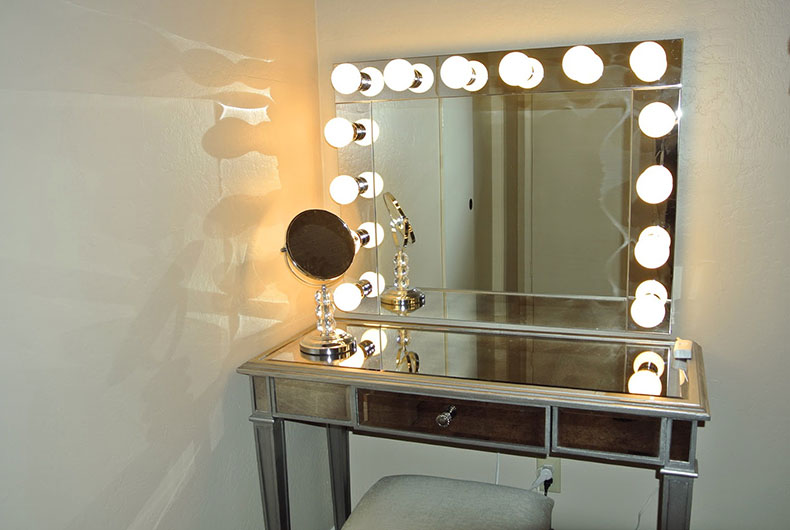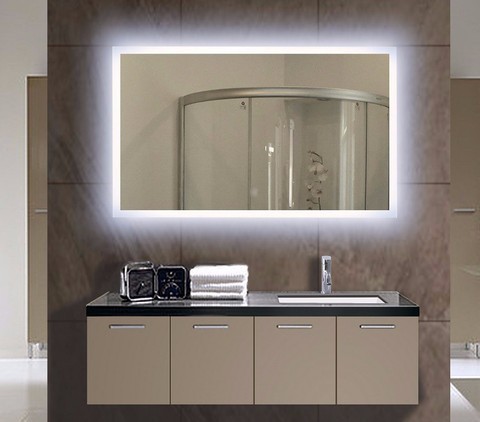1. Is there anything special about mosaic grouts?
No. The grouts and sealers you need are the same ones used for ordinary bathroom tiling, and the techniques of applying are the same.
2. How much grout do I need for my mosaic?
How much grout you need depends on three things:
1. the area of the mosaic = L x W
2. the thickness of the tiles
3. the gaps between the tiles
If the tiles are spaced with all gaps under 1/4", then you should be able to cover the entire mosaic of 18" x 18" with 2 lbs of grout. This is assuming your tiles are under 3/8" thick. I always set my mosaic on an old shower curtain or piece of plastic to catch all the wet grout that falls off the side as I'm spreading it. That way, I can scoop it up and use it. Otherwise you need a lot more grout because most is wasted.
Note that a standard grout gap is 1/16". If you keep your grout gaps small and uniform like this, you will use less grout, and it will be easier to grout. If your grout gaps are wider than 1/8", then it is difficult to wipe away the excess grout without eroding the grout from between the tiles.
3. Do I need grout with sand in it?
Unless you are trying to patch hairline cracks, the answer is emphatically yes. Sand gives the grout strength like gravel gives strength to concrete.
4. What color grout should I use in my mosaic?
I always choose a grout color which contrast the colors of the mosaic tiles so that the design is highlighted. Otherwise the individual tiles are lost to the eye, and the mosaic looks more like an ordinary picture and less like a mosaic made from pieces. I avoid situations like gray grout with gray tile. A nice red-brown grout works better in that instance. The key concept is color contrast.
5. I saw some clear grout. Where do I get this?
Grout is concrete. Obviously you saw some other product, probably silicon sealant.
6. My grout color is wrong! How do I fix it?
If your mosaic is in a wet location and the grout is used to actually seal out water, then you will need to use a grout remover tool to remove the grout and regrout with another color. However, there is an easier fix for indoor mosaics where water isn't an issue. Artists acrylic paint can be used to paint the surface of the grout. For mosaics made from smooth glass tile, this can be done by taking a rag and wiping the paint onto the face of the mosaic similar to how you grout. The paint sticks to the grout, but the glass tile is wiped clean while the paint is still wet. Note that you can't do this with rough or porous tile (tumbled stone, unglazed porcelain, etc.) because the paint will absorb into the tile. For these mosaics, you would need to use a small artists paint brush and carefully paint the grout lines.
7. Why did my grout crack?
Grout can crack for a number or reasons:
1. If the backer is thin enough to flex slightly, even a miniscule amount.
2. If the grout was allowed to dry out while it was trying to cure. Grout curing is a hydration reaction, not dehydration, and water is being chemically bound. Sometimes bare wood can suck the moisture out of the grout, but usually there is enough glue on the wood to prevent this. Misting can help, but misting sometimes leaches the color out of the grout.
3. Wood was used instead of plywood. Natural wood sometimes splits as it ages. Plywood is less prone to splitting. (Note: use for indoor/non-wet mosaics only.)
4. Using unsanded grout. Unsanded grout should only be used to fill hairline cracks. Normal grout gaps of 1/8" require sanded grout for adequate strength.
I always use thinset for attaching and grouting. It never cracks and has polymers added to allow it to flex slightly without cracking. When I do use glue, it is always Weldbond, which is a white PVA adhesive.
8. My grout started cracking and crumbled. What did I do wrong?
Make sure you mix the grout according to instructions on the package with sufficient water and stir it thoroughly. It should be like a moist dough when you start with no dry material or lumps. Also, you shouldn't let the grout dry out as it cures. Keep it covered with plastic if necessary or lightly mist with a spray bottle, taking care not to let drops accumulate on the surface of the mosaic.
9. Can I add a latex additive or polymer additive to make my grout harder?
Yes, but why would you? If you want extremely hard grout, then you should probably just use thinset, which is concrete with polymers added to make it sticky and give it added strength.
10. I bought the green/blue color - what grout do you recommend and what color? A shade of green, off white, or white?
I used 9 cases of this tile and after extensive research I went with Bostik 9-lbs Diamond Glass Urethane Premixed Grout. Its actually microscopic glass beads in a urethane base and is semi transparent. It feels like wet beach sand out of the container. Its expensive at $90 a tub but goes a long way (I used 2 tubs with 9 cases) and looks awesome. I was gonna order it online but discovered Lowes carries it.
11. Does my mosaic need to be sealed before grouting?
Only porous materials such as unpolished stone and unglazed porcelain need to be sealed to prevent staining. Things like smooth glass shouldn't stain. I use TileLab brand "Grout & Tile Sealer" for a normal seal. I use TileLab brand "Stone Enhancer & Sealer" if I want to slightly enhance/darken the stone colors (recommended). Both of these are available at hardware stores. I apply grout sealer with a small artists paint brush. I am careful to minimize the amount of sealer that drips to the sides where the grout should go. Make sure you don't put on so much that you get it down in the cracks. You only want to seal the face. I do this before I grout. I also seal the grout after it cures for two or three days.
12. I grouted my mosaic and then noticed that glue was showing. What did I do wrong?
You need to always clean up excess glue before you grout. I also use the following technique when using Weldbond indoors or outdoors. After the glue has dried for a day or two, I come back and mist the mosaic with water. After about 10 minutes, any traces of glue that are sticking up on the sides of the tile will start to turn white. I then take a razor knife like a box cutter or exacto knife and trim away the excess glue. This cleaning step ensures that there will be no glue sticking up and not covered by grout.
13. Can I leave my mosaic ungrouted?
If the mosaic isn't outdoors or in a wet environment, then you can leave it ungrouted. Outdoor mosaics should be grouted so that water can't get between the tiles and freeze. Similarly, mosaics in showers and fountains and other environments should be sealed so that moisture doesn't degrade the adhesive over time.
Indoor mosaics can be ungrouted. Note that even outdoor mosaics can be "ungrouted" if the tile is pressed into thinset mortar that is thick enough to squeeze up between the tile and fill most of the gap. That is how ancient Greek and Roman mosaics were made.
14. What's the best color grout to use?
Usually MEDIUM GRAY. Here's why: The purpose of grout in visual terms is to make each tile distinct like a gray pencil line in a watercolor. A medium or "natural" gray provides just enough contrast to most colors, unless you have gray tile, and then you might want to consider black or a dark gray. Avoid pure white unless you are trying to make something that looks like a little kid's summer camp project. Most building material stores such as Lowes and Home Depot cary about 30+ colors of grout. Bring a few of each color of your tiles with you, and you can pick the color grout that works best with all the tile.
15. How do I dye grout? Where do I get colored grout?
Color is best provided by the tile, not the grout. In terms of a visual element, the grout is supposed to act like a thin gray pencil line that just makes each tile distinct. I don't think I've ever seen a mosaic that used colored grout that wouldn't have looked better if all tile had been used instead. For example, let's say you wanted red tile in pink grout. A better way to get the same color effect would be to mix in a few pink tiles randomly throughout the red tiles, or maybe use a few lines of pink tiles. Often this means you have to cut your tile just a little bit smaller.
There are mineral concrete dyes sold at building material stores, and these can be used, although the range of colors is limited to black, brown, gray, terracotta, etc. Vegetable dyes such as food colors will not be permanent.
16. Do I need grout with sand in it?
Unless you are trying to patch hairline cracks, the answer is emphatically yes. Sand gives the grout strength like gravel gives strength to concrete.
17. Do you have any tips on grouting this tile to avoid filling the cavities in the surface?
I used a "spatula" from Kobalt. It has a foam-like bottom and worked very well. There is a number on it: 0242673. Only do a small area at a time then wipe excess with damp cloth. If I got some grout in the hole, I took a toothpick and got it out. It is a beautiful backsplash. Be sure to seal the scabos before and after putting on wall.
18. Do you have to grout it or just use motar for the back?
You would use a thin-set mortar or construction grade adhesive to apply this tile to the wall, then you can grout the tile once it is set.











Post Comments
You must be logged in to post a comment.
click here to log in